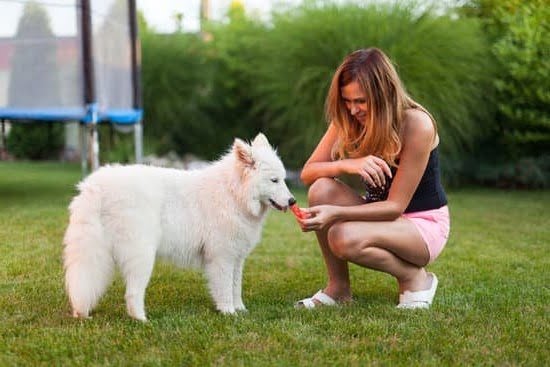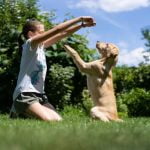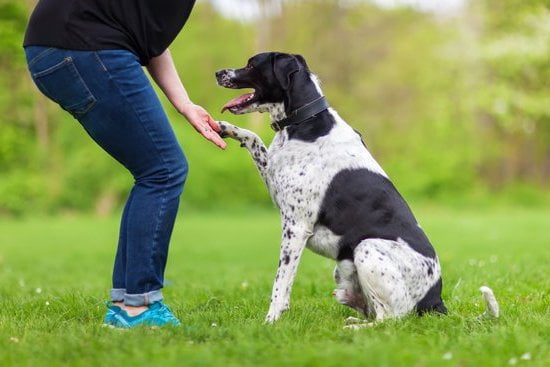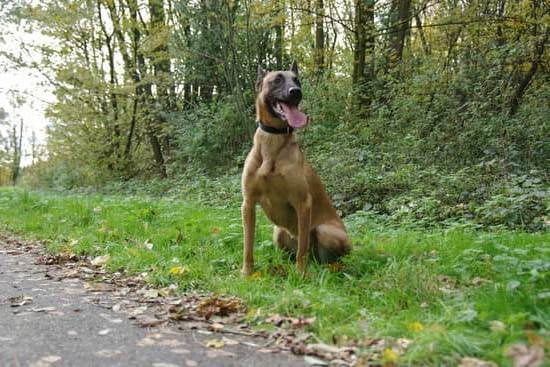Clarify the Different Types of Training Methods
To train a dog to poop in one place there are different training methods that can be used. Positive reinforcement is a popular method, and involves rewarding the pet for pooping in the desired location, such as with treats or verbal praise. Crate training can also be helpful, as it will teach the animal to only go in spaces where it is allowed – this also helps with potty training inside the house. Clicker training uses conditioned behaviors to create an association between an action and a sound; for example, giving a click when the dog begins to go in its designated area, followed by praise and treats. Finally, setting up barriers around the designated area can help limit messes until your pet has gotten used to toileting in their designated spot.
Understanding Dog Behavior
When a dog is learning a new skill, such as being trained to poop in one place, stress or nervousness can sometimes interfere with their ability to learn. To recognize signs of stress, it is important to be familiar with some common canine behaviors that may indicate they are feeling uneasy or overwhelmed.
Signs of stress can vary greatly depending on the individual dog and may include panting, pacing, yawning, lip licking, dilated pupils, drooling more than usual, and decreasing body language like turning away from the trainer or cowering. In some cases a dog may become vocal even if it normally does not bark or growl during training. They may also refuse commands which can lower the trainer’s confidence in their abilities as well.
It is important to take note of any behaviors like this when attempting to potty train a dog as this can help identify how they are processing information and affect their behavior when being given instructions on where to go “potty.” It is also beneficial to reward success whenever possible while still following any previously established house rules regarding pooping in specific areas around the house (e.g., grassy patches outside). Doing so will help reinforce the concepts being taught and create positive memories associated with going outside instead of negative ones which come with punishment for inappropriate elimination inside the home.
Practicing Patience
The key to successful dog training is to be patient and have a calm demeanor. Working with your dog’s behavior can be slow and tedious, but results come with consistency and repetition over time. When first teaching a dog where to poop, it is important to not put too much expectation on the animal. Have patience while they learn new behaviors and strongly reinforce the desired behaviors each time they are exhibited.
Once you’ve found an appropriate spot for your pet to relieve themselves, closely monitor their progress each day while constantly praising them when they do something right. With enough effort, patience and proper reinforcement, your pup will eventually learn which behaviors are acceptable and which are not. Be sure to provide positive reinforcement for when they obey the rules by providing treats or praise so that they recognize the benefits of following commands. Additionally, avoid scolding or punishing your pet in any way if mistakes should occur as this could create fear in them and promote excessive negative behavior.
Creating a Safe Environment
Creating a safe environment for potty training is critical to the success of teaching a dog to do its business in one place. To start, make sure that there aren’t any potential hazards like sharp objects or toxic substances where your pup can step in or consume if they are pooping outdoors. Also, fencing off a certain area will help to keep them in bounds and give them boundaries. Inside the house, using mats and absorbent cloths on the floor will help to contain any mess made.
During the process, it’s important to remain positive throughout while providing positive reinforcement every time your pup does their business in the correct spot. Never use physical punishment or scolding as this could prevent any further progress. Treats work wonders in motivating your pup to do their business in their designated area and provides them with something rewarding for making good choices. Additionally, establishing consistent potty routines can also be instrumental when potty-training your dog; take them out at least three times a day and praise them whenever they go in their designated space.
Modifying Behavior in Other Areas
The most important step when modifying existing bad behaviors is to be consistent. This may mean setting boundaries and expectations in every area of the house so that the dog knows what is acceptable and what isn’t. It also means consistently enforcing these rules when they are broken to ensure your pet learns that their actions have consequences. When punishing bad behavior, it’s important to correct the dog while they are displaying the undesired behavior, as this will help them learn which behaviors should be avoided. You can also redirect their attention with commands such as ‘sit’ or ‘stay’ that focus their energy on a desirable task. Finally, reward your pet for good behavior by offering treats and positive reinforcement like scratches behind the ears or extra playtime whenever they do something correctly. This will help encourage them to stay on track and eventually remember what is expected of them in different areas of the house.
Utilizing Other Resources
Training your dog to poop in one place can be tricky but with the right resources and techniques, it is possible. Vet visits are a great way to get to the root cause of any issues that may be causing your pup to struggle with potty training. During these visits, you should discuss specific behaviors you find that your dog exhibits that seem out of the ordinary, such as frequently pooping in an undesired location. Bloodwork may be suggested which can help shed light on any underlying medical conditions that could potentially hinder potty training progress.
Furthermore, hiring a professional dog trainer can also be incredibly beneficial for successful potty training. A professional dog trainer will have extensive knowledge about canine psychology, body language and behavior modification which can offer helpful tips and advice on how to proceed with your pup’s training. With an experienced trainer by your side at all times, you can address any current or future obstacles during the process, making sure that all associated behaviors remain progressive rather than regressive.

Welcome to the blog! I am a professional dog trainer and have been working with dogs for many years. In this blog, I will be discussing various topics related to dog training, including tips, tricks, and advice. I hope you find this information helpful and informative. Thanks for reading!





